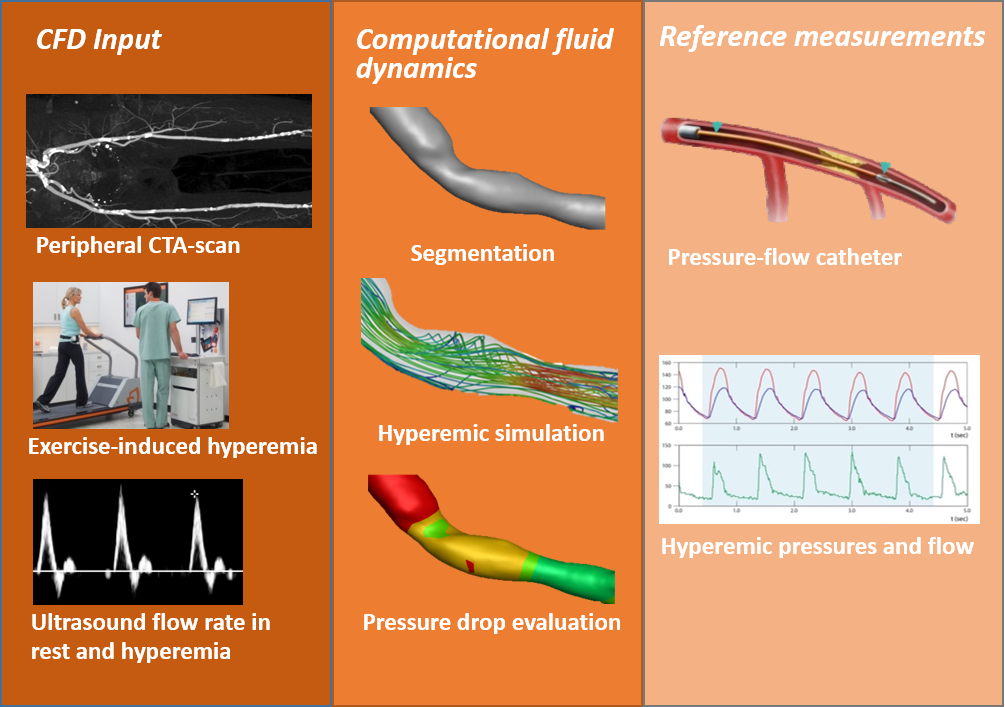CFD based decision support for multifocal stenotic disease in the femoropopliteal artery
For isolated stenotic lesions in the arteries supplying the legs, the peak systolic velocity ratio measured by duplex ultrasound is a well-established indicator of significant flow impairment and a good predictor of outcome after revascularization. For multifocal stenotic disease in the femoropopliteal arteries, however, current imaging modalities do not offer a proper directive on whether the stenotic lesions combined significantly limit blood flow and which lesion do or do not contribute to the flow limitation. Invasive assessment of the total translesional pressure drop is possible but clinically unfeasible due to patient risks and personnel requirements for a diagnostic endovascular procedure.
Alternatively, a patient’s blood flow can be non-invasively simulated by computational fluid dynamics (CFD) to estimate the translesional pressure drop, also for multiple lesions with complex shapes. This study (overview, Fig. 1) aims to validate the CFD method against in-vivo pressure measurement and assess its clinical value in predicting response from revascularization. By ultrasound measurement of the maximal flow rate that a patient can achieve after exercise, a CFD model can be built that accurately simulates the physiology on a patient level. Eventually this may lead to clinical availability of a CFD platform predicting the hemodynamic outcome after treatment and prevent the treatment of lesions that do not contribute to flow impairment.

Figure 1: study overview.
